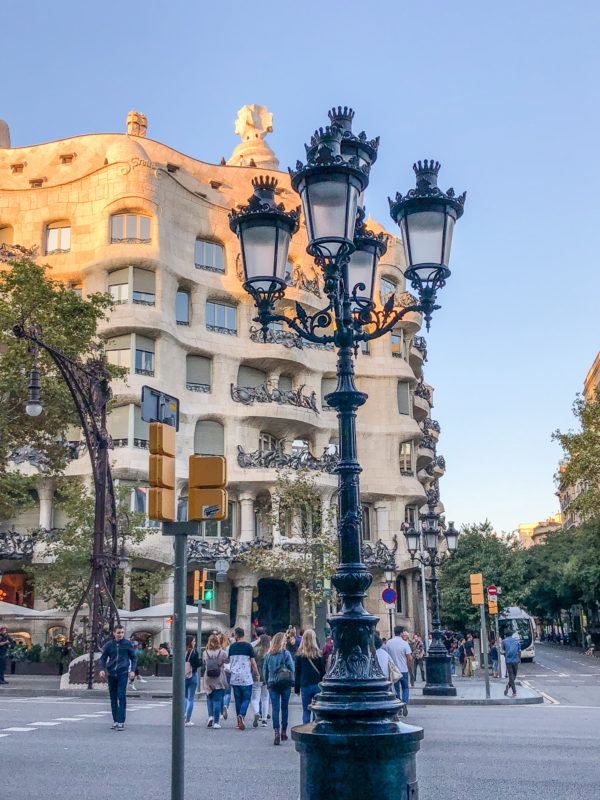
While I was having a leisurely lunch with a friend, and explaining how I intended to spend a quiet October at home in Chicago, Charles was making plans for us to go to Barcelona. And while time at home is always nice, I couldn’t pass up an opportunity to accompany Charles on a work trip to Barcelona. I had traveled to Barcelona twice while I was in college, and fell in love with the beautiful and temperate city. Surprisingly, Charles, who is half Spanish, had never been to Barcelona, giving me the perfect excuse to explore the city all over again.
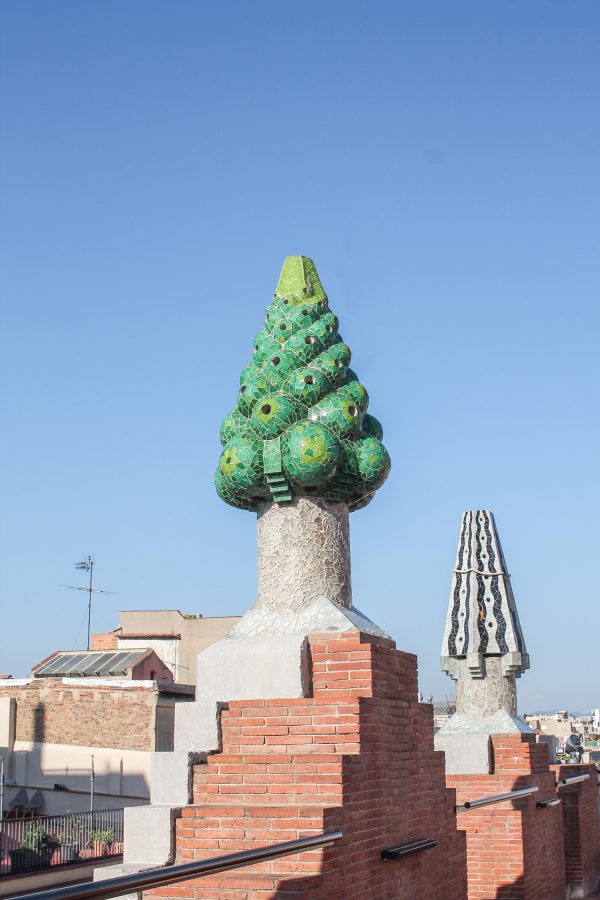
A lot can change in 12 years. When I visited Barcelona in 2004 and 2005 there were hardly any tourists. You didn’t need to book tickets to anything in advance. Park Güell wasn’t even charging admission! I felt like a complete idiot when I brought Charles all the way to Park Güell just to find that tickets were sold out for the day! Barcelona has become a major tourist destination, so you definitely need to take the time to plan your itinerary and buy necessary tickets before you arrive. The hardest ticket to get is entrance to Sagrada Familia, something we had to skip simply because no tickets were available.
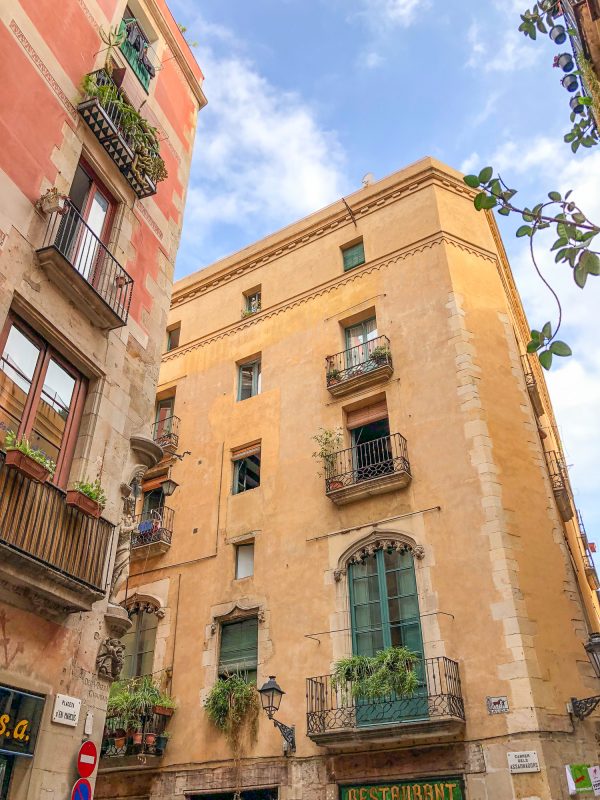
We visited Barcelona during the first week of October, so Charles could attend a conference and so that we could spend a couple extra days in Barcelona sightseeing together. The weather was wonderful but what we didn’t expect was that our trip coincided with a vote for Catalonian independence on one day, a city-wide strike on another day, and a third day filled with pro-Spain protests. We lost a couple days of sightseeing due to protests. We opted to relax at our hotel on those days since most of the city was shut down, and we didn’t want to risk being at the wrong place at the wrong time.
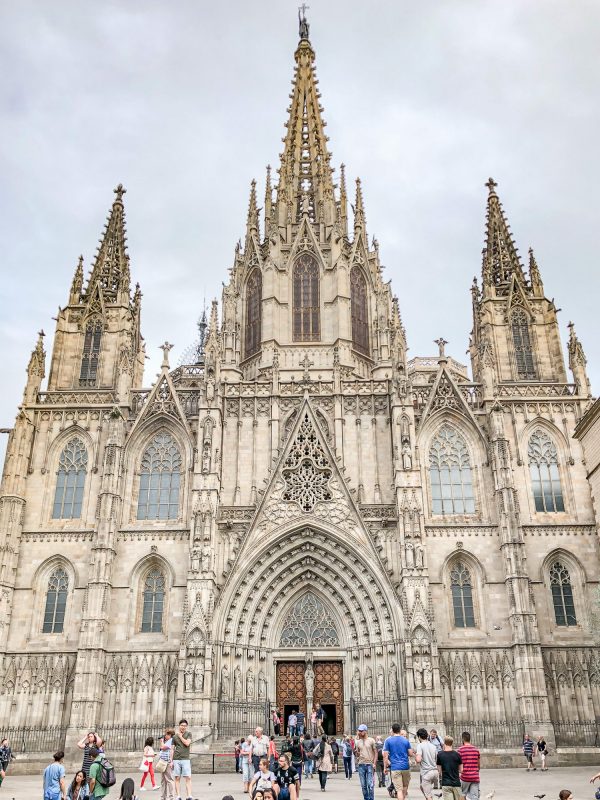
Despite the strikes, protests, and political craziness, we had a fun week in Barcelona and we tried to see as much of the city as we could. Here is my guide of what to do in Barcelona.
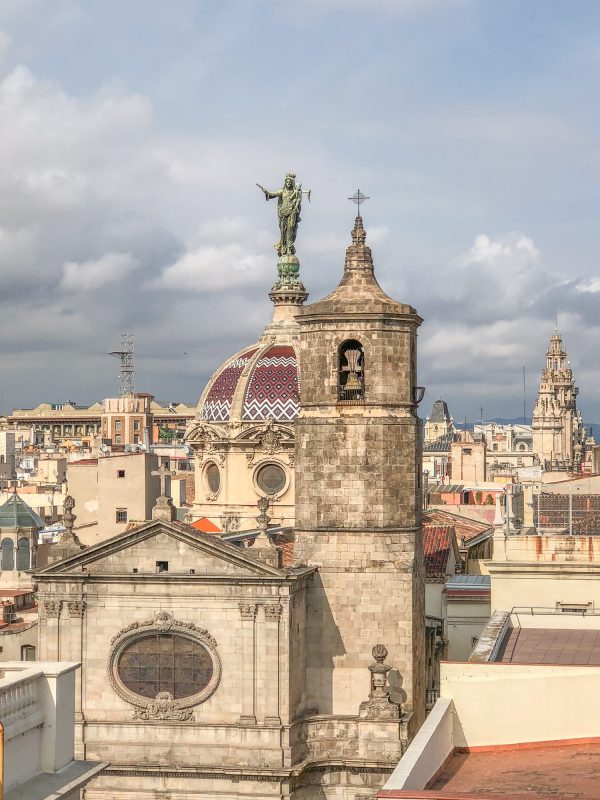
The Picasso Museum
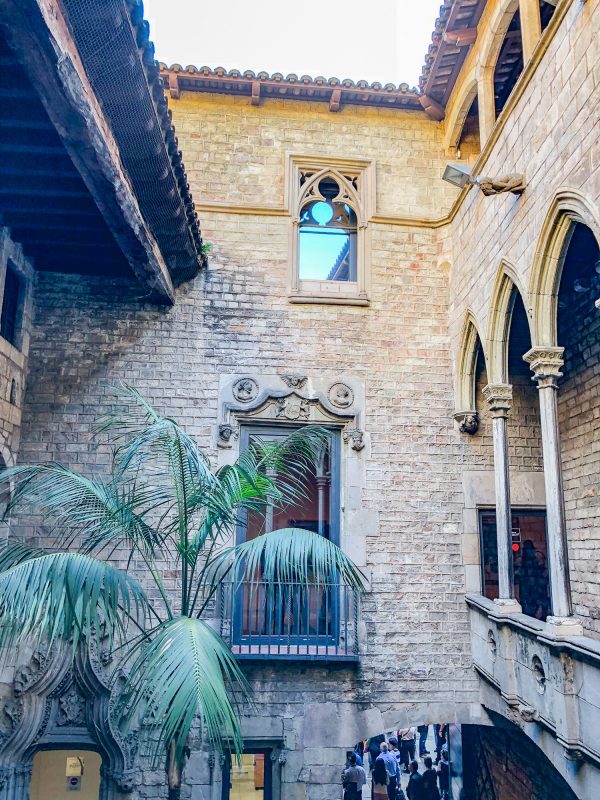
Barcelona is known for its art and architecture. Two of the city’s most famous former residents are architect Antoni Gaudí and artist Pablo Picasso. The Picasso Museum is right in the heart of the Gothic Quarter, and it is just the right size to see in 2 hours. It can be busy, and it is probably best to buy your tickets online in advance.
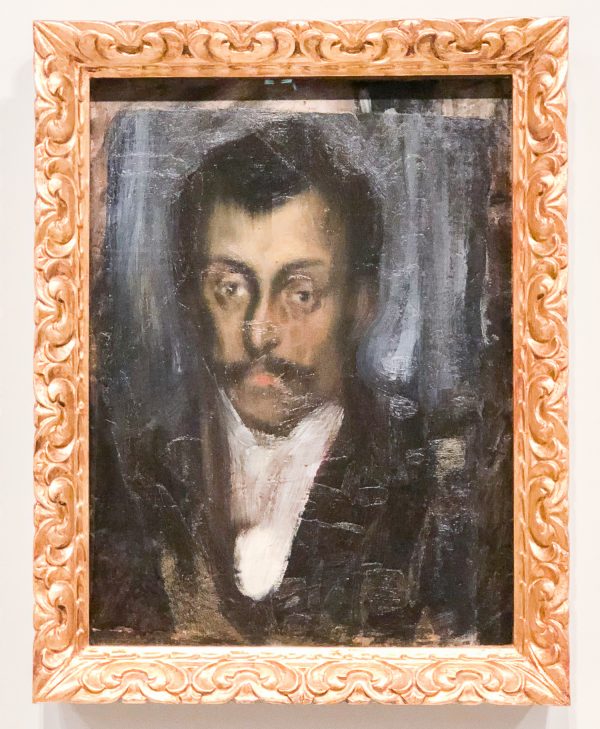
The museum is home to over 4,000 of Picasso’s drawings, paintings, and ceramic works. While some of Picasso’s major works are in other museums, The Picasso Museum in Barcelona does house his series of paintings based on Velázquez’s Las Meninas. Just in case you didn’t major in Art History like me, Las Meninas is a famous painting of Spain’s Princess Margarita. The massive painting depicts the Princess with members of her court, and is shows the artist himself working as the princess poses in the center of the painting. Las Meninas is one of those paintings that you can stare at for hours and still see something new. Several works from Picasso’s Las Meninas series occupy a room at the Picasso Museum in Barcelona, and it is a highlight of their collection.
Park Güell
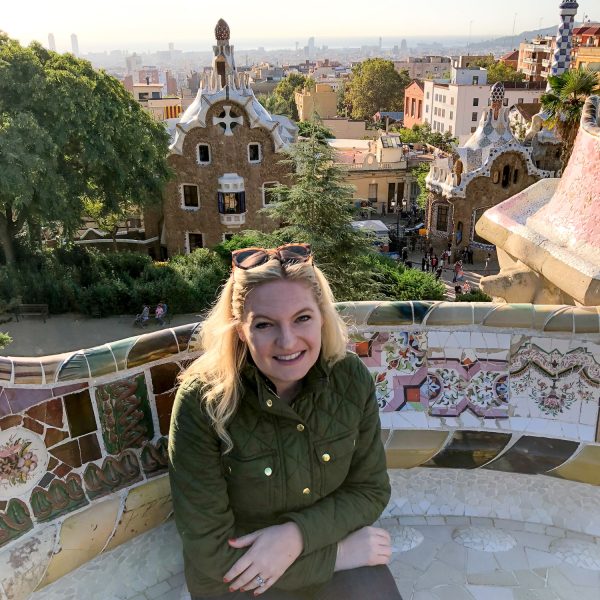
The day before I flew to Barcelona I spoke on a panel with my friend Dan. When I mentioned that I was traveling to Barcelona his response was that Barcelona used to be his favorite city. When I asked him why it isn’t his favorite city anymore he said, “I don’t know, it just isn’t anymore.” When I was watching hordes of people crowd Park Güell taking rapid fire selfies I realized that part of Barcelona’s charm was that is used to be far less crowded than cities like Paris and Rome. Today tourism in Barcelona is booming – 10,000 people visit Park Güell each day – and that easy going charm of the city has been tainted.
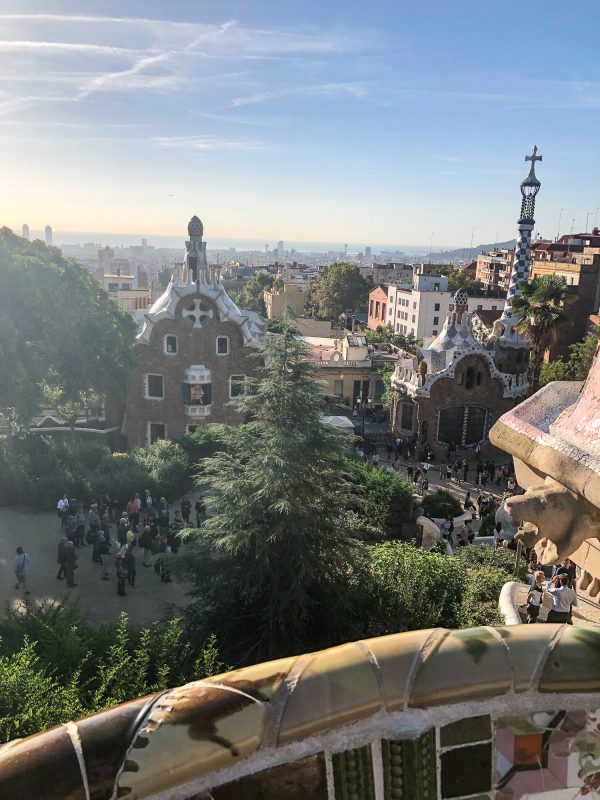
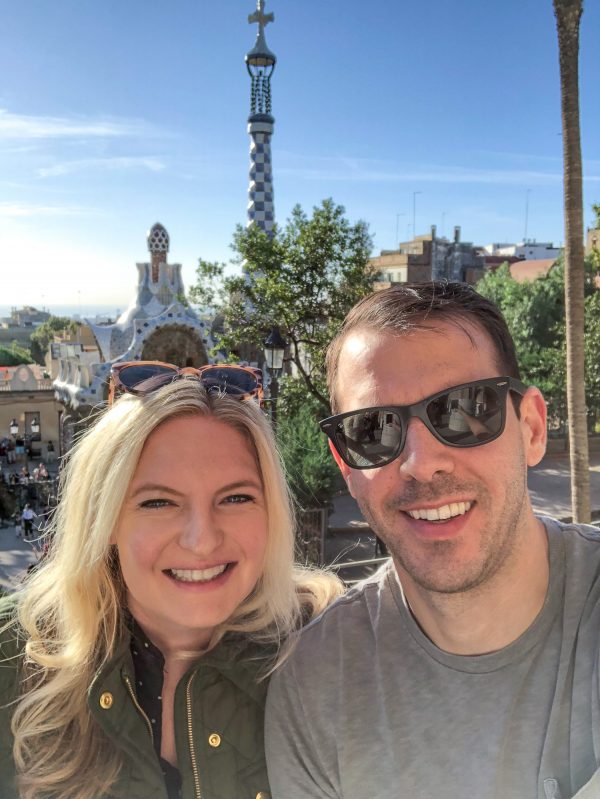
Twelve years ago Park Güell was free and it wasn’t the least bit crowded. You didn’t need to book tickets to Sagrada Familia days in advance. Nothing was sold out for the day, and there were no crowds. It was easy and stress free. I don’t want to sound negative – Barcelona is still one of Europe’s grandest cities and it absolutely deserves a spot on your travel bucket list, just be prepared for it to be crowded.
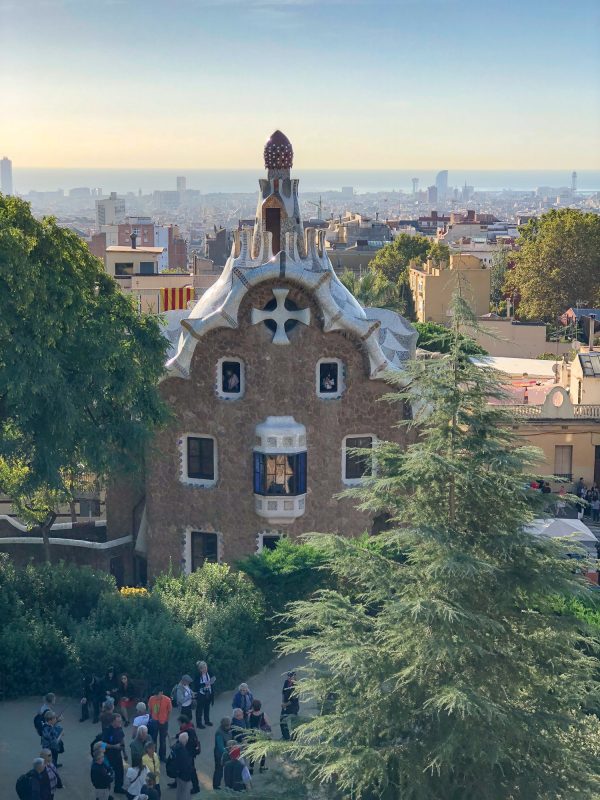
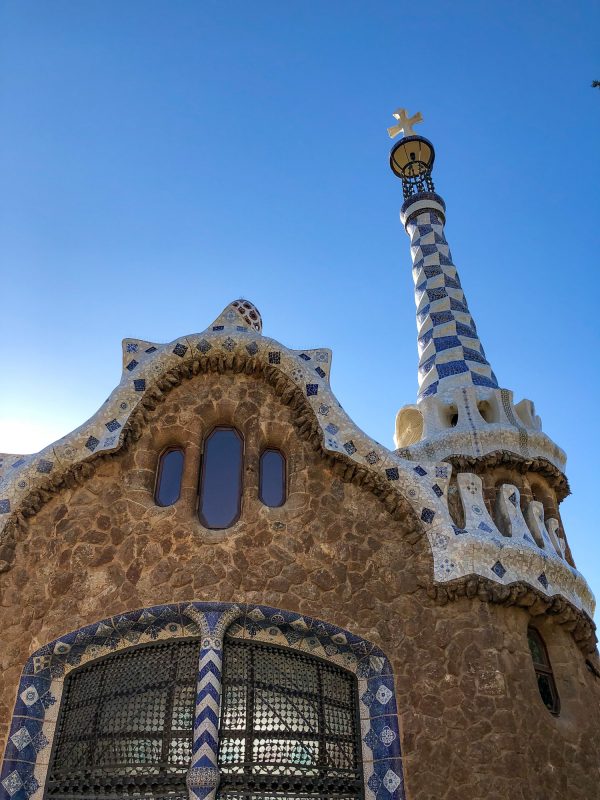
Even though Park Güell is crowded, you shouldn’t skip it. It is an architecture wonder and the ultimate example of Gaudí’s work. I very highly recommend going to Park Güell early in the morning. Tickets are sold for 30-minute time slots, and once you enter you can stay as long as you like. So as the day goes on, the park becomes increasingly crowded. We arrived at 9:20am and there was already a 45-minute wait to get into Gaudí’s home. Every 30 minutes another 400 people are let into the park, even though only 1200 of the 10,000 daily visitors to Park Güell had been let in by the time we arrived, it still seemed crowded.
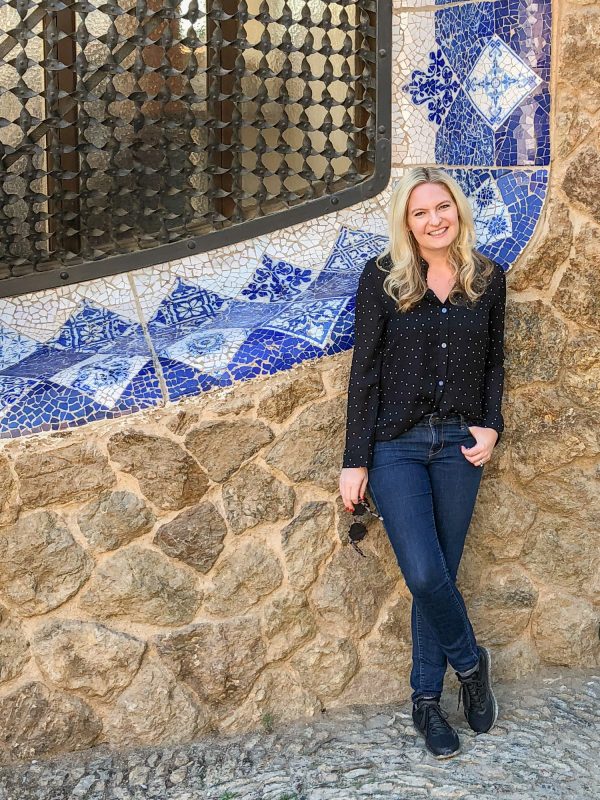
The story of Park Güell is that Gaudí’s biggest patron, Eusebi Güell had the idea for an aristocratic community, and he brought on Gaudí to design it. The idea of aristocrats moving to a hilltop outside the center of Barcelona didn’t take off. So instead, Güell’s and Gaudí’s homes occupy the area, which is surrounded by an expansive park with sculptures, gardens, and a massive long curving park bench covered in mosaics.
Güell Palace
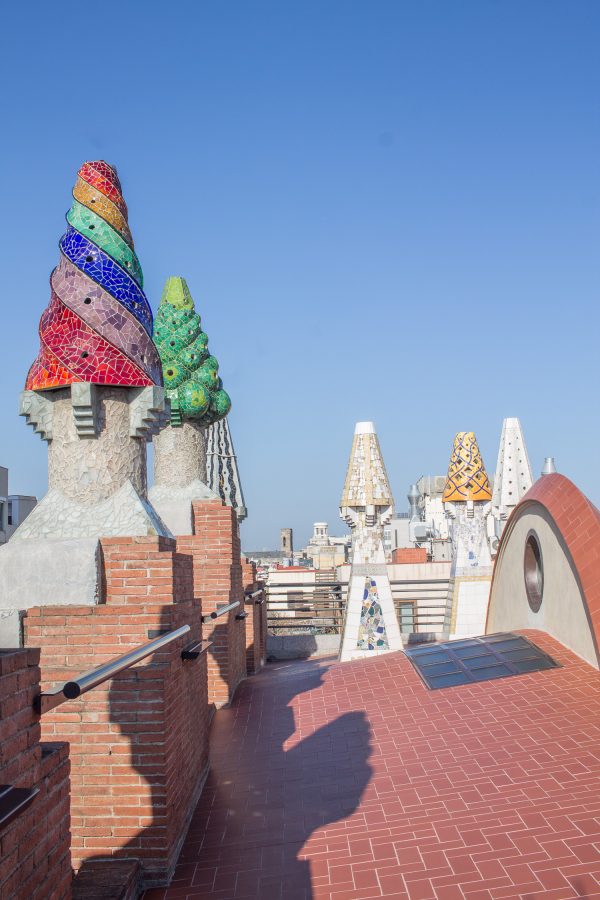
For a less crowded Gaudí experience, tour some of his other architectural works– I recommend Casa Batllo and Güell Palace. You might not even need to book advance tickets to tour these sights.
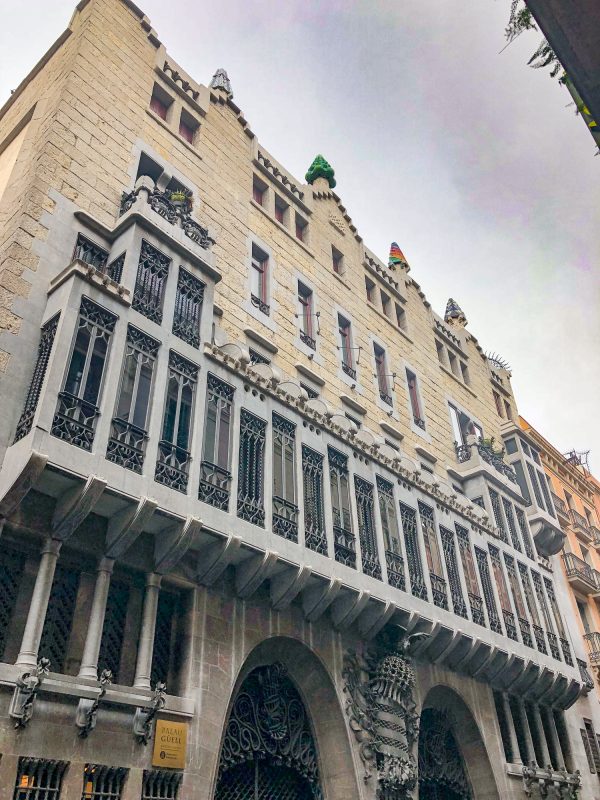
Güell Palace is just off of Las Rambas and it was the residence of Eusebi Güell’s family, and a prime example of Gaudí’s work that is especially well known for its decorative mosaic chimneys. The audio tour takes you from room to room telling the story of the Güell family and explaining Gaudí’s artistic inspirations.
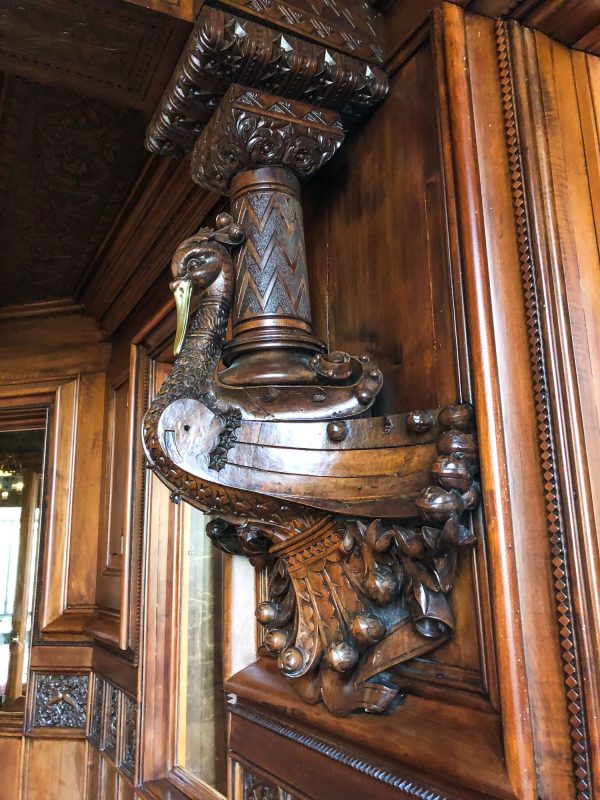
Gaudí didn’t stop at designing the structure of the building, he paid attention to each and every detail, working with a wide variety of craftspeople to decorate and furnish the home.
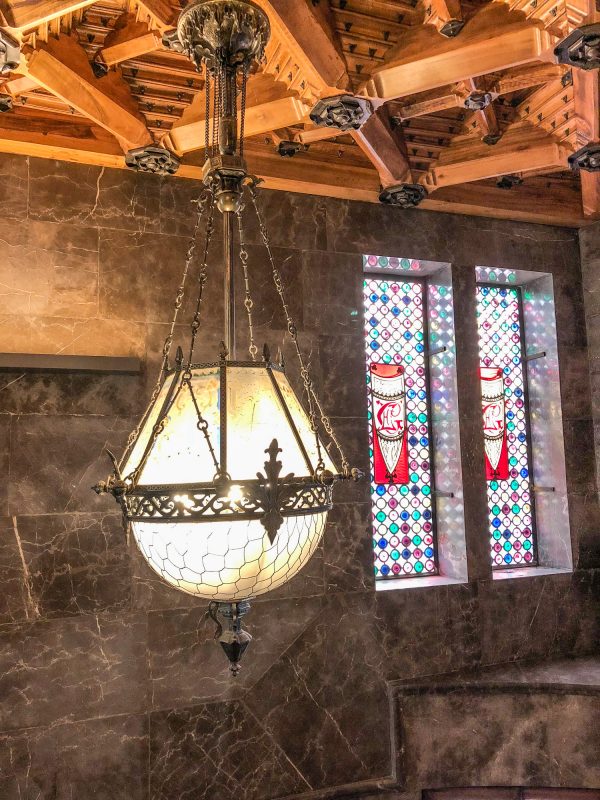
He was even involved in designing light fixtures like this lamp – and just look at that ceiling. Güell Palace is in incredible shape, hasn’t been changed with renovations, and still contains some of the original Gaudí furniture. If you are interested in architecture, art, or interior design, visiting Güell Palace is a must.
Casa Batlló
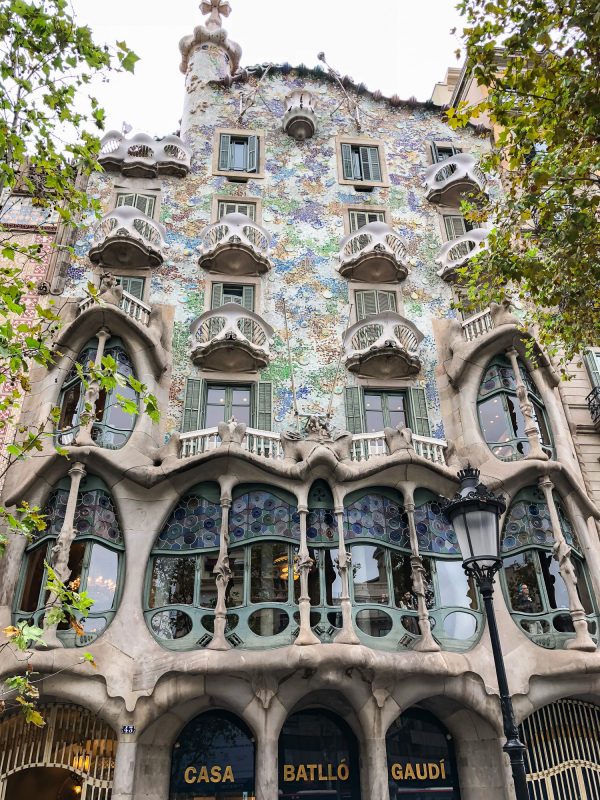
Casa Batlló is one of the most stunning examples of Gaudí’s work. The facade of the building includes the classic elements of Gaudí’s architecture: decorative mosaic tiles, curving organic shapes, a decorative turret, mosaic chimneys, and parabolic shapes. The roof of the building looks like the back of a dragon.
I think Casa Batlló is equally beautiful on the inside. While I didn’t go inside during this trip, I have been inside before and seeing the interior gives you a bigger appreciation of Gaudí’s work. The atrium is covered with a glass ceiling, has mosaic covered walls, and curved windows. Some hallways take on the shape of a parabola making them seem more like a sculpture. Gaudí was known for adding design elements throughout his architecture in the form of built in benches, carved wooden window frames, doorways, and staircase, and stained glass windows. There is so much more to see inside than there is on the outside.
A Bike Tour
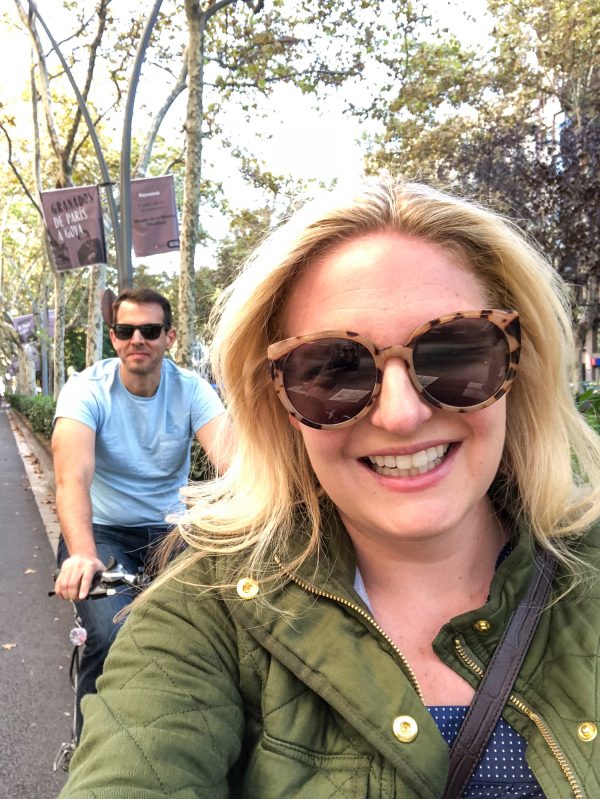
Charles and I love going on bike tours, so I signed us up for a private bike tour with E Bike Tours Barcelona. The private tour was about $70 more, and it meant that the tour was customized around what we wanted to do. (It also meant that we didn’t spend any time waiting around for anyone which was a nice luxury). The company offers 4-hour bike tours, and you have the option of adding on a tour of Sagrada Familia. Barcelona is very bike friendly and has dedicated bike lanes, so it is an ideal city to go on a bike tour. And don’t worry about the city’s hills, the bikes are electric bikes so as you pedal it feels like someone is pushing you along. We cruised through the city with ease.
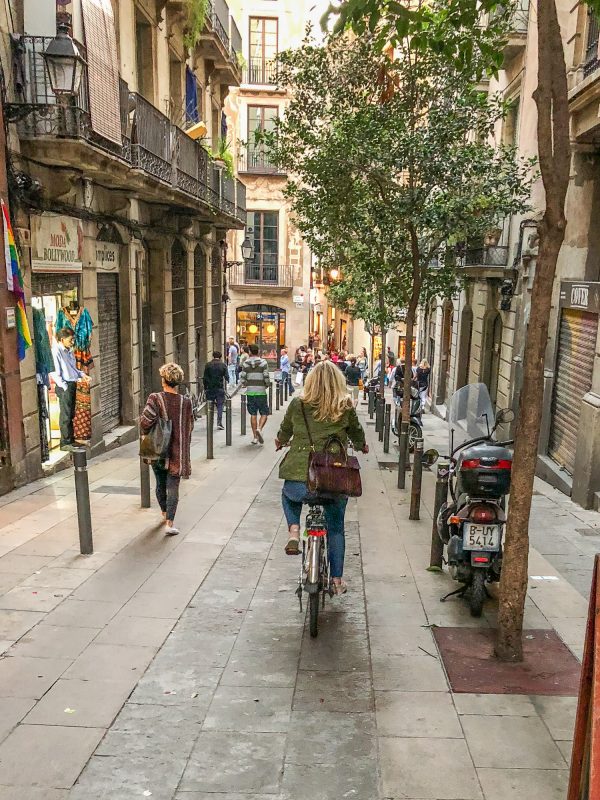
Barcelona is completely filled with stunning architecture. Many of the buildings that weren’t designed by Gaudí echo his design elements with curving organic shapes in the rod iron balconies and decorative stonework giving the city a cohesive and unique architectural style. This is something that I came to appreciate as we covered a lot of ground on the bikes, making our way through several neighborhoods.
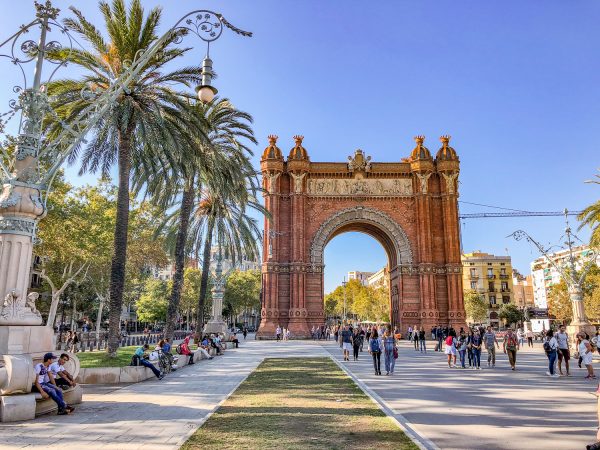
The tour included a trip to an Barcelona’s arch de triumph, several Gaudí architectural works including Sagrada Familia, and a visit to an off the beaten path but beautiful residential neighborhood called Gracia – and a stop for tapas!
Parc de la Ciutadella
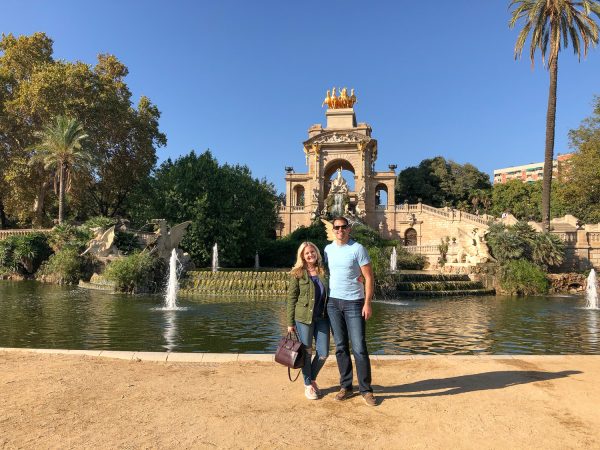
Our favorite part of the bike tour was riding through Parc de la Ciutadella, which reminded me a bit of Central Park. The park has contains a pond with rowboats, a zoo, the Museum of Natural Science, and plenty of pathways for biking.
The centerpiece of the park is the Cascada, a massive fountain that was displayed at the Universal Exhibition, and is reminiscent of the Trevi Fountain in Rome.
Sagrada Familia
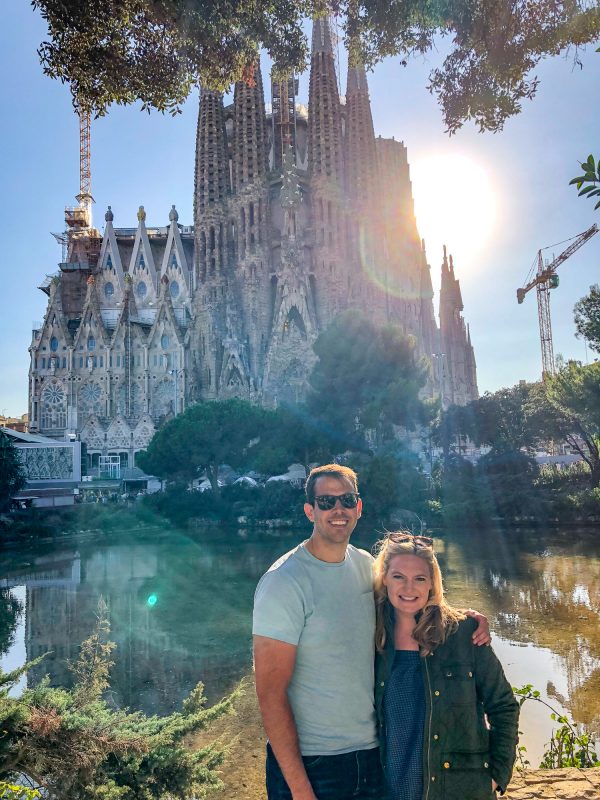
Even though tickets to go inside Sagrada Familia were totally sold out during our trip, we go to see the outside, which is amazing. Sagrada Familia is a massive basilica designed by Gaudí and it has been an ongoing construction project for decades. The basilica is being funded by private donations, and has been under construction since 1882. Today they still need to construct 10 more spires and the construction will hopefully be complete in 2026 – the hundredth anniversary of Gaudí’s death. The decorative elements of the basilica won’t be complete until 2032. (Crazy, right?)
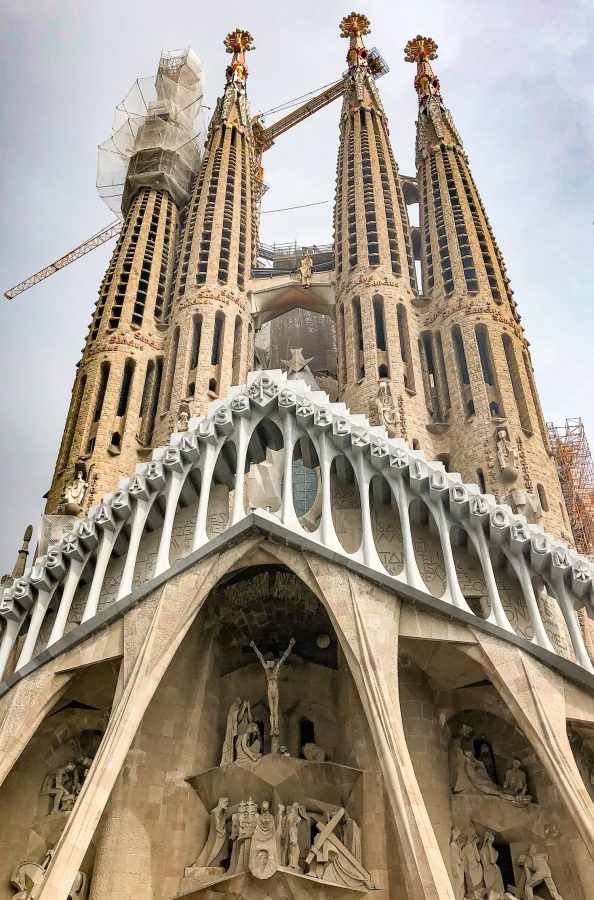
The architectural inspiration of Sagrada Familia were Late Gothic and Spanish Modernism (which is similar to Art Nouveau) styles. It is unlike anything else – with parts of the structure looking like a sand castle, 18 spires (not all completed) that tower over the city, and intricate carvings on the facade that depict stories from Bible. The facades depict the Nativity, the Passion, and the Glory. The Passion facade is carved in a angular modern style.
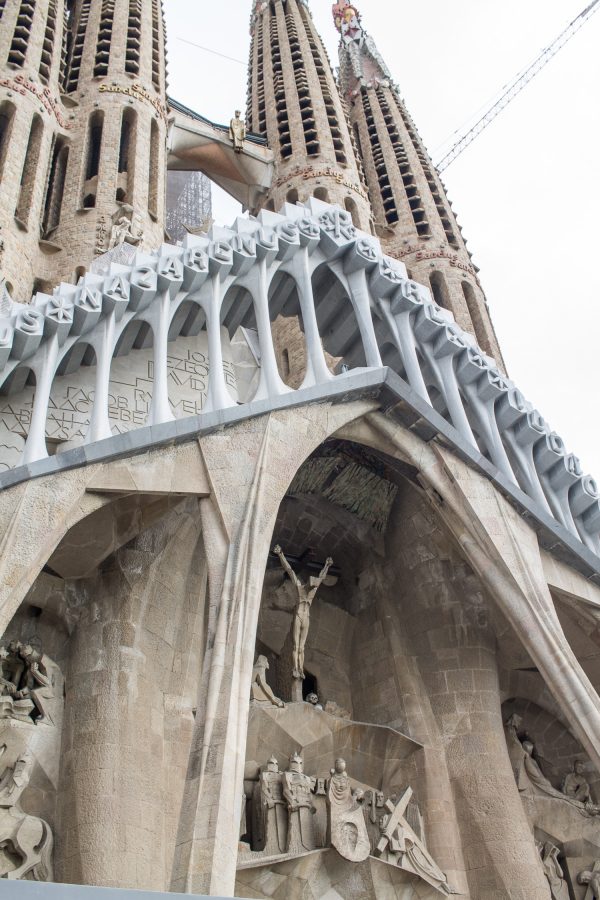
The facades are only one example of the Biblical symbolism in the design of Sagrada Familia. The spires each represent a different Apostle, the Virgin Mary, Jesus, and the four Evangelists. I studied art history and studied in Italy for a semester, and I have seen a lot of churches, and there is absolutely nothing like Sagrada Familia. If you visit Barcelona, you can’t miss this.
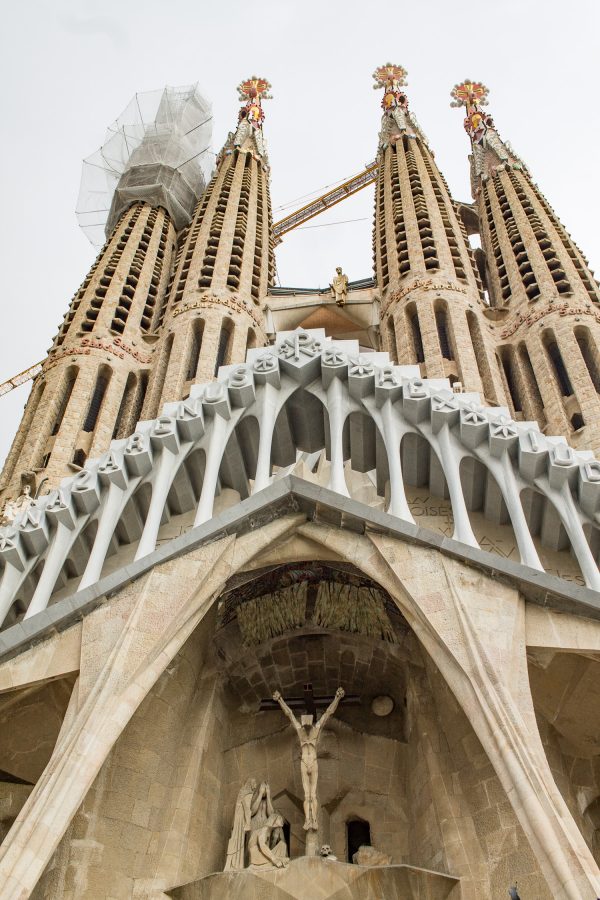
Over 2.5 million people visit Sagrada Familia each year, and the cost of tickets to enter goes towards finishing the construction.
Poble Espanyol
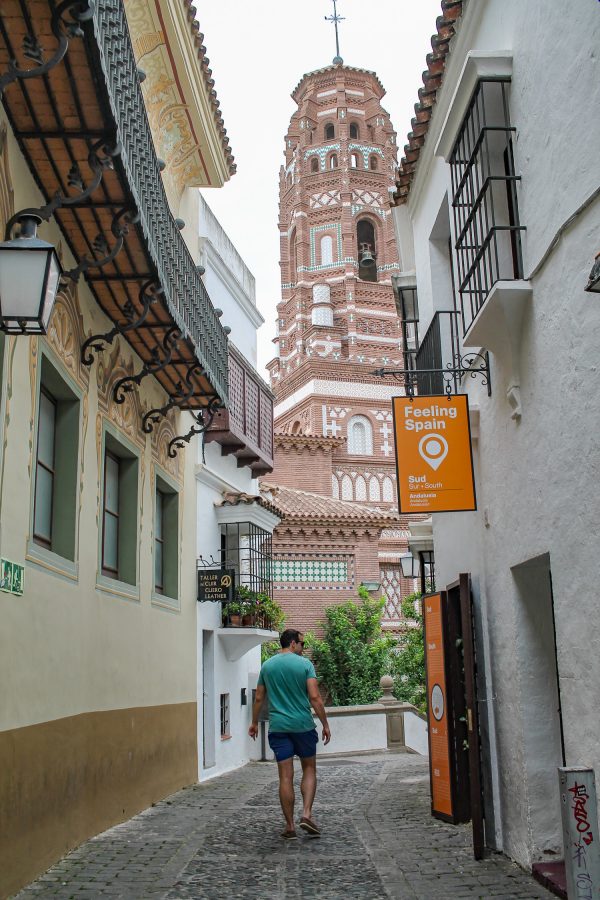
There is one sight that Charles and I recommend skipping. Poble Espanyol was described as an outdoor museum of architecture featuring recreations of Spanish styles of architecture. I thought it would be a fun place to learn a bit more about architecture and take some photos. In reality, it was a lame tourist trap that somewhat reminded us of Epcot with all of the fun sucked out.
Where to Eat
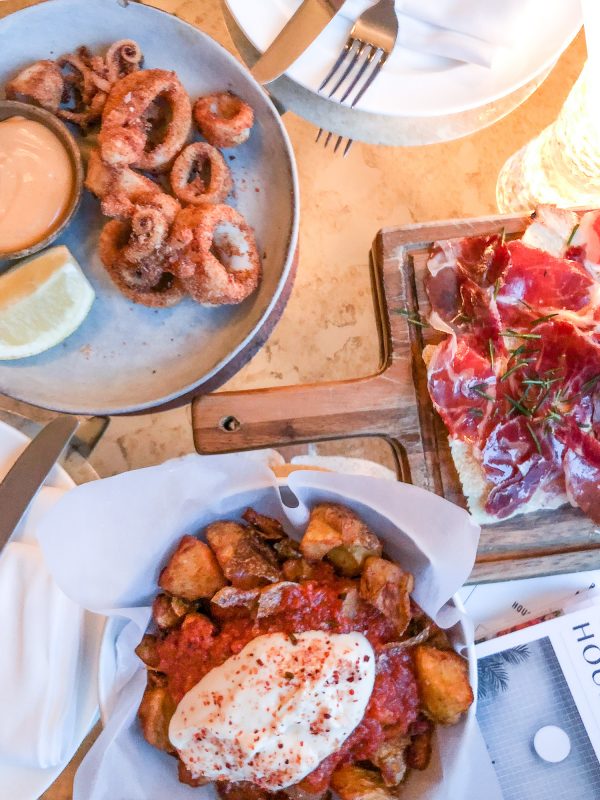
Wondering where to eat? Check out this blog post! I think we spent the majority of our time in Barcelona eating, and that was a wonderfully delicious life decision.
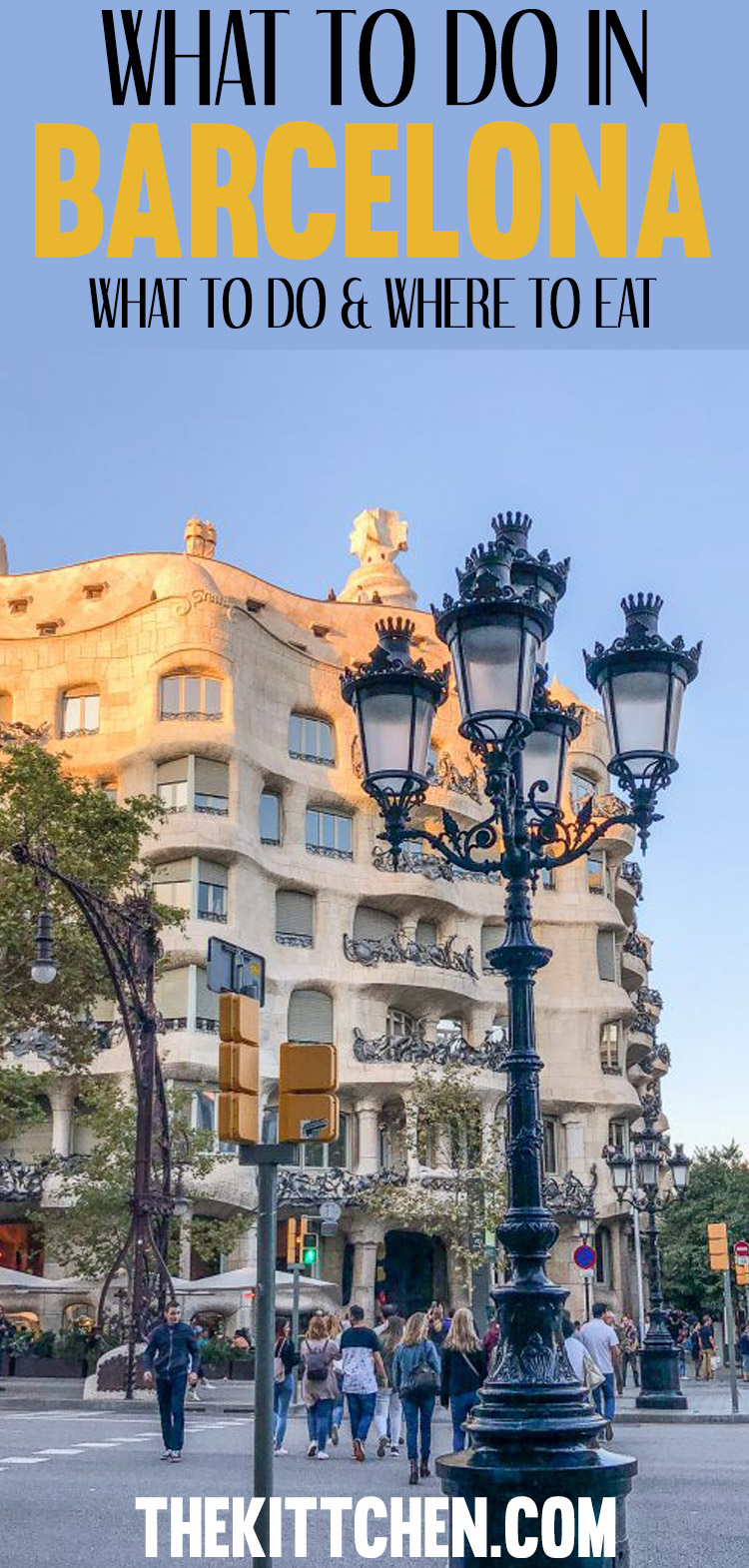

Jenn Lake
Tuesday 31st of October 2017
The guide turned out so well! I'm going to include this post in Friday Charades - all of the photos are so fun!
thekittchen
Friday 3rd of November 2017
Thanks so much Jenn!